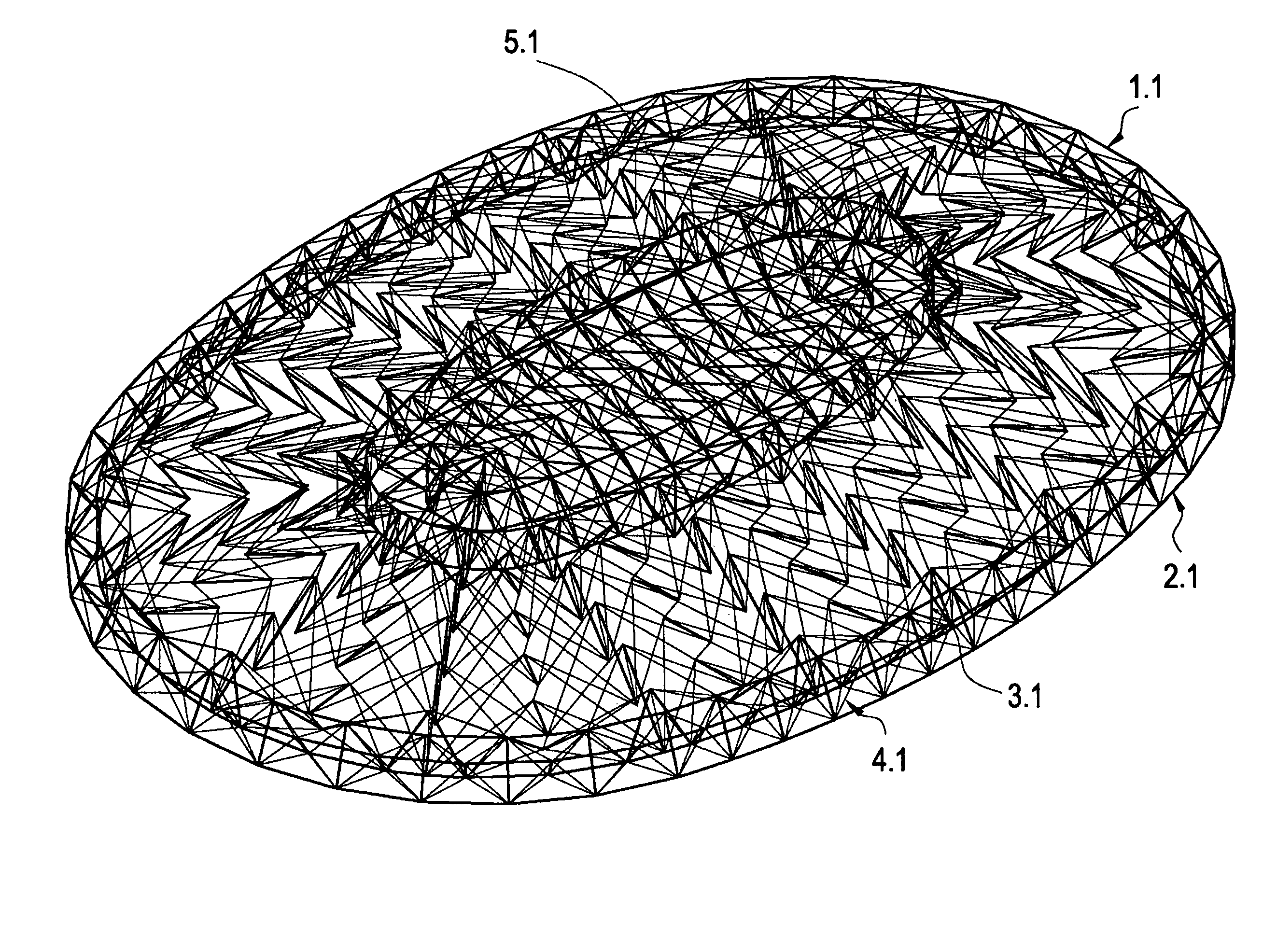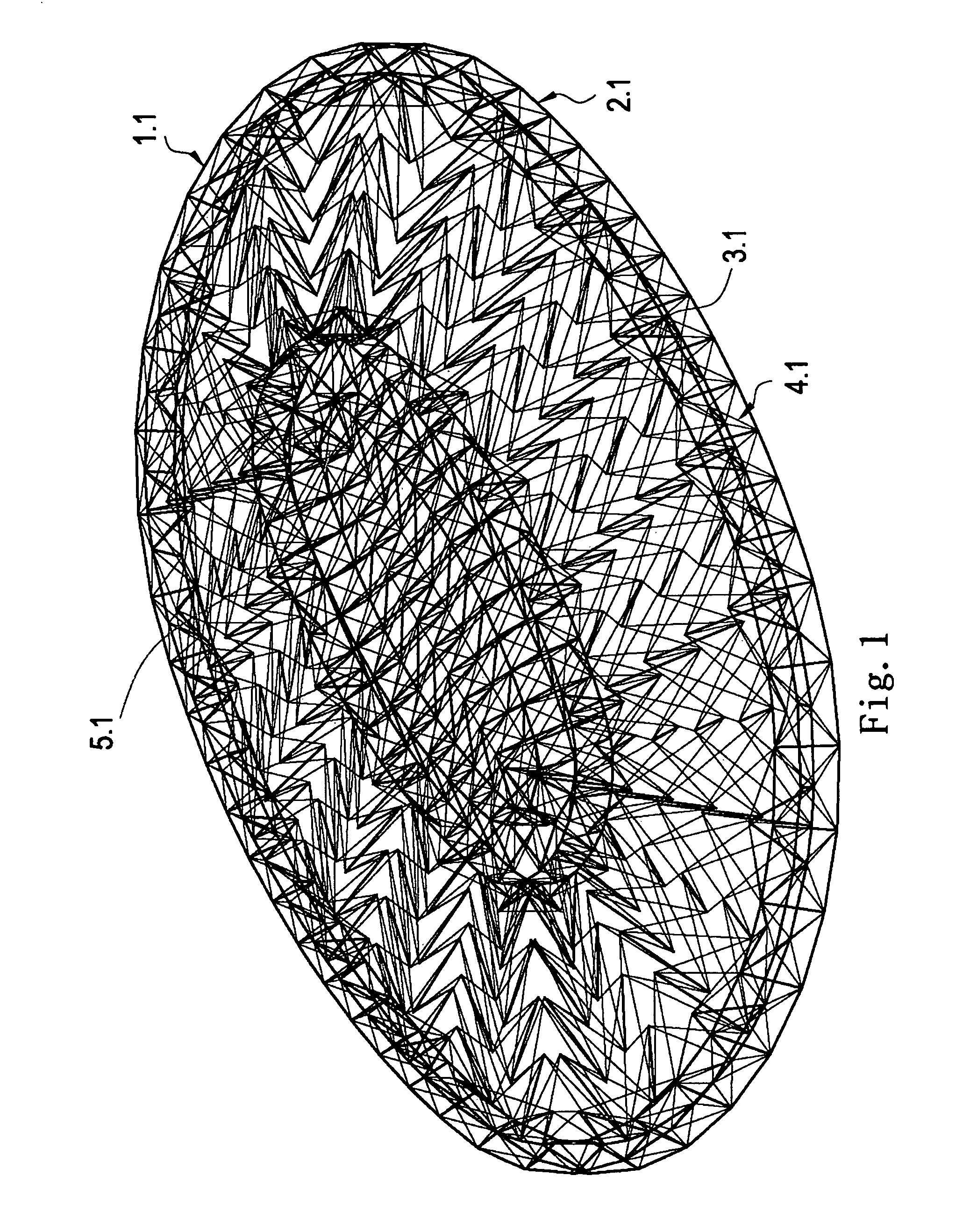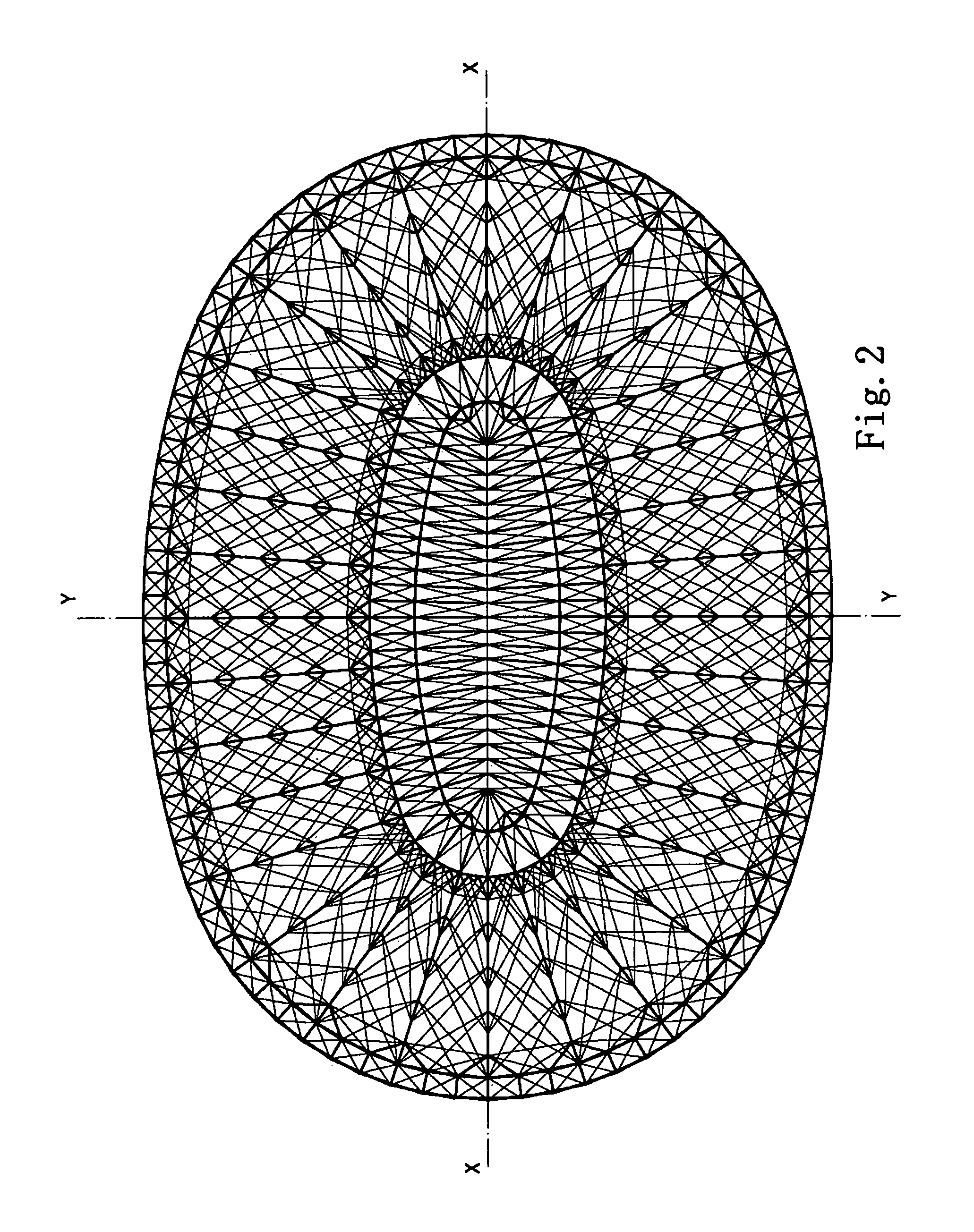Double-layer cable-strut roof system
a cable-strut roof and double-layer technology, applied in the direction of building roofs, building reinforcements, construction, etc., can solve the problems of high cost, complicated prestressed structure, heavy structure, etc., and achieve the effect of facilitating description and stable self-equilibrium
- Summary
- Abstract
- Description
- Claims
- Application Information
AI Technical Summary
Benefits of technology
Problems solved by technology
Method used
Image
Examples
Embodiment Construction
[0069]Referring to FIGS. 1 to 23, a double-layer cable-strut roof system according to preferred embodiments of the present invention is illustrated.
[0070]FIG. 1 is a perspective view of a double-layer cable-strut roof system in accordance with one embodiment of the first system of the present invention. It is to be noted that structural members are arranged regularly in the system but people skilled in the art will understand after reading the description that the system can be constructed in various manners with irregular structural members' arrangement. An upper layer 1.1 of the roof system may cover entirely or partially roofing materials space as required. In this embodiment of the present invention, a lower layer 2.1 is parallel to the upper layer 1.1, but they may not parallel each other. A plurality of diagonal struts 3.1, diagonal cables 4.1 and vertical cables 5.1 are arranged between the upper and the lower layers. Plan views of the upper and the lower layers, layout drawi...
PUM
 Login to View More
Login to View More Abstract
Description
Claims
Application Information
 Login to View More
Login to View More - R&D
- Intellectual Property
- Life Sciences
- Materials
- Tech Scout
- Unparalleled Data Quality
- Higher Quality Content
- 60% Fewer Hallucinations
Browse by: Latest US Patents, China's latest patents, Technical Efficacy Thesaurus, Application Domain, Technology Topic, Popular Technical Reports.
© 2025 PatSnap. All rights reserved.Legal|Privacy policy|Modern Slavery Act Transparency Statement|Sitemap|About US| Contact US: help@patsnap.com



